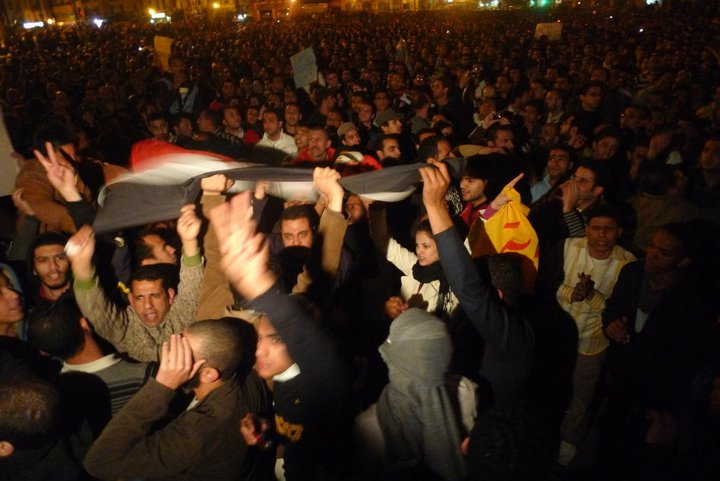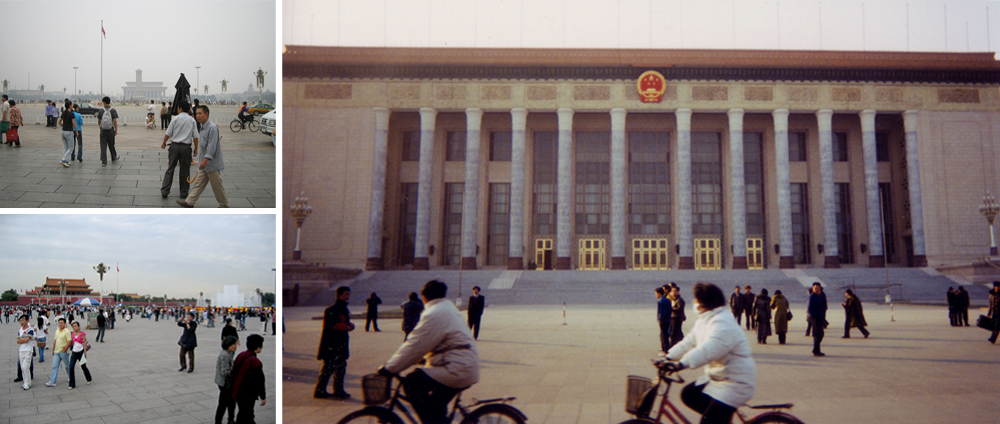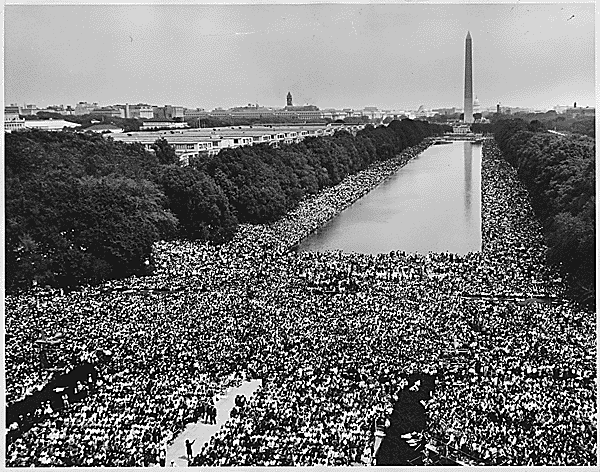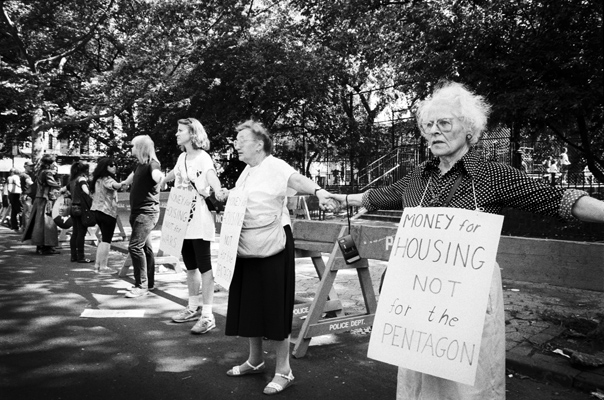A Country of Cities
A series of opinion pieces in which Vishaan Chakrabarti casts key current events as rallying cries in his evolving argument for urban density, for a Country of Cities.
We are celebrating 15 years — and counting — of stories that are deeply researched and deeply felt, that build a historical record of what the city has been.
What follows is the ninth in a series of opinion pieces in which Vishaan Chakrabarti casts key current events — the climate talks in Denmark, the Gulf Oil Spill, the canceling of the ARC tunnel project — as rallying cries in his evolving argument for urban density, for a Country of Cities. In this installment, he examines the protests unfolding across the Middle East in terms of how urban space, specifically spaces of public assembly, reflects the political priorities of those in power and enhances or prohibits social change. –C.S.
As the revolution in Egypt has unfolded, much attention has been paid to the significance of Facebook and Twitter as organizing platforms for the revolutionaries. Indeed, the Mubarak government shut down the Internet over the past few weeks to limit communications, a move that proved futile in either suppressing the uprising or prolonging his rule.
Of equal, if not greater, importance has been the platform (a word that once referred to something exclusively physical) provided by Tahrir Square in central Cairo, the geographic epicenter of the revolt. The breathless images of men and women, young and old, civilian and military, galvanizers and galvanized, together setting up encampments and protests in Tahrir Square, also known as Liberation Square, give us faith not only in humanity’s common right to assemble but our common expectation that cities, by definition, must provide ever-restless places of assembly.
Public spaces like Tompkins Square, Tiananmen Square and Tahrir Square have been stages for history because they provide the loci for urban gathering, particularly for a city’s youth. After all, if the revolution is to be televised, from where else would it be broadcast? One could argue that without cities and the spaces they inspire, nations themselves would never change.
It’s hard to imagine a nation without public spaces that foster urban values of mixture and inclusion: the closest I have experienced is Saudi Arabia, where I traveled last year. While there are major developed cities to be sure, one must question whether they fulfill basic standards of urbanity. Such standards are not a Western invention or imposition. Islamic civilizations have created some of the world’s great cities, starting with the religion’s original site of refuge and political organizing, the city of Medina (which means “city” in Arabic), and its holiest site, Mecca, to which the pious make pilgrimages in their millions every year.
Yet the unique morphology of contemporary Saudi Arabia’s capital, Riyadh, by contrast, stifles the very development of a public realm. With four million inhabitants and growing, Riyadh is virtually devoid of the public space in which forbidden activities such as the sharing of facilities between men and women, fraternizing between unmarried couples, or protests by abused “guest workers” could ever occur. There are very few places of gathering on the streets. There are virtually no cultural institutions that invite the public, such as movie theaters or performance halls. The most significant convening spaces used by the public are shopping malls, prized of course for their air conditioning, but also for the tight control of public behavior by the religious police that malls enable. In other words, the great social and creative mix of cities extolled throughout centuries of urban thought is made impossible in the urban agglomerations of Saudi.
This is not to say there are not public squares in Riyadh. Perhaps the most famous is Deera Square, which ex-pats call Chop Chop Square in reference to the public decapitations meted out to criminals convicted of murder, rape, even witchcraft, for all to witness. For the state-sanctioned activities in Deera Square alone, Saudi Arabia would be an international pariah if it weren’t for the vast oil reserves that fuel our SUVs and McMansions.
In the US, we tend to take public spaces and the activities they enable for granted. From the history of protests in Tompkins Square Park, to Martin Luther King’s 1963 “I Have a Dream” speech on the Washington Mall, to the makeshift memorial built in Union Square after 9/11, it is deeply embedded in our psyche that civil discourse should have a stage on which to play out. While some moments of dissent occurred in contained surrounds like Rosa Parks’ bus, the majority of democracies worldwide will continue to see their hopes and pains played out in sweeping public spaces.
In the weeks and months to come, it would be wise for us not to take for granted any emerging democracies that may unfold upon the public squares of the Middle East. The past few weeks were not our best as a nation, with President Obama and Secretary Clinton contradicting each other over the desired timing of Mubarak’s departure. There has been a pervasive sense that our foreign policy establishment, which helped establish the status quo, would prefer that very status quo to the risks of Egyptian self-rule. Instead of giving full-throated support to Egypt’s protesters, some seemed to be arguing that stability may need to overrule democracy as a practical matter, a realpolitik that has consistently placed us on the wrong side of history dating back to our support for the Shah of Iran. People may wearily point to the rise of the Ayatollahs in post-revolution Iran, but do they consider that had we not actively backed a vicious dictator for so many decades prior, Iranians may have been less tempted by such an extremist government? Instead we continue to play the lead role in our “axis of stability” formed by the US, Israel and Saudi Arabia, which understandably wants to maintain our primary peace treaty in the Middle East, but is just as concerned about the movement of oil through the Suez Canal. Again, we seek this so-called stability to perpetuate a lifestyle the world can no longer afford, and we can only resolve by urbanizing our great nation. As Thomas Friedman wrote in Sunday’s Times, “stability has left the building…good riddance.”
And perhaps this is the primary lesson about public space. That beyond our day-to-day needs for it be clean, amenable, and safe, it also has to allow for the expression of instability, for the expression of a world ever in need of change. Change is the essence of urbanity, and Egypt has reminded us that urban space can drive us towards a changed, perhaps unstable, but in the end better world.
This is what we imagine when we imagine a Country of Cities: a country and a world in which urbanity drives us towards a new, untested reality. We imagine our nation as dense and transit-based, so that our needs for gasoline and home heating oil don’t cause our government to back oppressive Middle Eastern regimes. We imagine a country and world in which a horrifying place like Deera Square can someday truly be public. We imagine a world in which pharaohs exit, and liberty prevails.
This is the ninth in a series of opinion pieces in which Vishaan Chakrabarti casts key current events as rallying cries in his evolving argument for urban density, for a Country of Cities.
The views expressed here are those of the authors only and do not reflect the position of The Architectural League of New York.
A series of opinion pieces in which Vishaan Chakrabarti casts key current events as rallying cries in his evolving argument for urban density, for a Country of Cities.







Comments